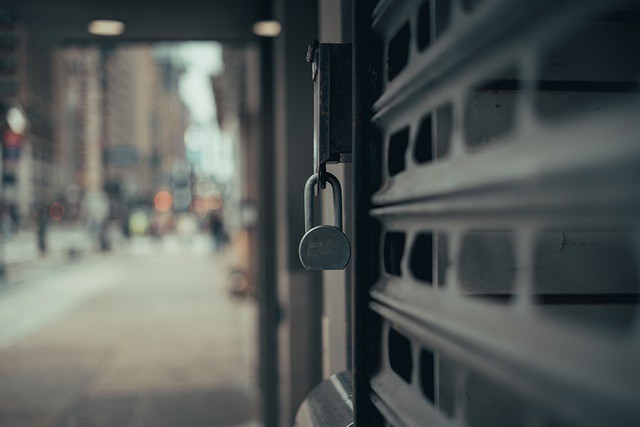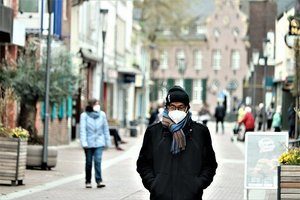
The roaring 20s – will there be a return to the cities that never sleep?
One of the strangest sights during the pandemic has been the image of some of the biggest, busiest cities in the world being almost completely deserted at times – barren, eerily quiet,
almost apocalyptic.
However, with the easing of restrictions as part of the government’s roadmap out of lockdown, and the success so far of the UK’s vaccination programme, there are signs that major global cities such as London and New York could experience a renaissance as those who have moved away during the pandemic return for the greater cultural, culinary, sporting and leisure opportunities on offer.
Here, with the help of a number of property experts, we explore how the prime markets are coping in the Big Smoke and the Big Apple – two cities that are said to famously never sleep.
How has the prime New York market been affected by Covid and how is it bouncing back? Are buyer priorities now vastly different?
Dan Tub, senior director of sales at The Towers of the Waldorf Astoria, said: “In New York, like all major global cities, there was a short-term dip in prime residential activity. However,
the draw for international buyers remained strong and our sales team seamlessly transitioned to providing digital showings.”
Early last year, they were contacted directly by an interested buyer living in Australia who had fond memories of their stays at Waldorf Astoria New York. “We were able to show them
the development and identify a residence for them completely virtually, relying on a live video tour of the residential gallery with the sales team, combined with digital marketing
materials created in anticipation of sales launch,” Tub added. “The buyer signed a contract to purchase a residence in mid-March 2020.”
“While we wait for international travel to resume, technology continues to provide a window to connect with our interested buyers across the globe, which we can execute seamlessly.” He says, since the start of the new year, there has been strong global interest in the New York prime market and the sales team at The Towers of the Waldorf Astoria has seen substantially increased market interest as well as in-person viewings at the property.
“In one case, a buyer who was looking at residences well above $5 million made a purchase sight unseen. When they did come to visit the development in person, they were so impressed with the building that they decided to purchase a second residence in the same price range,” Tub went on…
“Another buyer, who came to the residential sales gallery on Park Avenue, was so excited about a specific unit, that upon hearing that another prospective buyer had just toured the same residence, signed a contract immediately at the full asking price, a little over $3 million, in order to secure their dream home.”
Tub argues that, in a climate like we have today, buyers gravitate towards rare opportunities that will never be available again. “Our buyers have multi-year plans in place, and they appreciate the security and reliability of Waldorf Astoria New York,” Tub concluded. “What’s more, despite the past year, everyone still wants to be in New York, the premier global capital of wealth, culture, and entertainment.”
How has the prime London market been affected by Covid and how is it bouncing back? Are buyer priorities now vastly different?
 Fred Scarlett, director of sales and marketing at Clivedale London and a former Olympic gold medal-winning rower, said: “Following a momentary dip in ultra-prime sales when the UK property market closed for two months in March of last year, we began to see pent-up demand for ultra-prime property release upon its reopening in May.” He says lockdown has ‘thrust us all into an extraordinary period of reflection’, which for so many has led to ‘intense individual scrutiny of personal values and life requirements’ – and nowhere more so than the ultra-prime residential sector.
Fred Scarlett, director of sales and marketing at Clivedale London and a former Olympic gold medal-winning rower, said: “Following a momentary dip in ultra-prime sales when the UK property market closed for two months in March of last year, we began to see pent-up demand for ultra-prime property release upon its reopening in May.” He says lockdown has ‘thrust us all into an extraordinary period of reflection’, which for so many has led to ‘intense individual scrutiny of personal values and life requirements’ – and nowhere more so than the ultra-prime residential sector.
“Perhaps, historically, a London residence was more ‘trophy’ and ‘asset’ whereas purchasers are now driven by how they live rather than purely how they invest.” Scarlett, who won gold at the Sydney Olympics in 2000 as part of the eights and who has also worked in the world of champagne in the UK, France and the US, added: “In the case of our Mayfair Park Residences scheme, the proximity to the open space of Hyde Park and access to the world-class five-star hotel services of [the] Dorchester Collection are magnetically attracting the global elite.” “Why be a hotel resident when you can have a residence in a hotel with full 24/7 hotel services and access to the best spa in London, all within Mayfair’s most discreet address – hence the reason we experienced such a high number of enquiries over the pandemic.”
Charlie Baxter, managing director and co-founder of Alchemi Group, the developer responsible for the transformation of Westminster Fire Station, agrees that the last year has given people a chance to reflect on their priorities – with health and well-being now top of the list. “Buyers are taking more time to search for creative inspiring spaces, especially work from home areas that they can enjoy working in. I predict this spring we'll see pent-up demand from international buyers and developers will have to raise their game to deliver more inspiring homes,” he said.
“In fact, we recently sold a penthouse in SW8 to an international buyer who valued the thoughtful interior design, layout, and outdoor space. This was sold for a record price in the building and substantially higher than the agents predicted pre-Covid.” What is the 15-minute living concept and why is it increasingly popular? Scarlett says the idea of a hyper-local lifestyle that enables residents to have whatever they could wish for on their doorstep, from restaurants and cultural offerings to green space, has become increasingly desirable following the pandemic.
“Residents no longer wish to travel as much as they previously had to. At our Marylebone scheme – The Mansion – we have seen buyers move across from smaller flats in less curated
neighbourhoods to larger apartments and we have also seen buyers move down from larger multi-storey homes in St John’s Wood and Hampstead looking for lateral convenience and first-class private fitness and wellness facilities,” he explained. “As always there is a flight to quality, it just seems that now there is one less excuse to further postpone the decision to move.” How will the recently introduced 2% stamp duty surcharge on overseas buyers affect the market?
According to Scarlett, the 2% levy for international buyers will in some areas of the market have an impact. “However, for the UHNW overseas investor, this is unlikely to affect their decision to
purchase ultra-prime London real estate because of the capital’s status as one of the world’s most desirable cities,” he insisted. “In relative terms, globally, buying ultra-prime London residential property provides significantly better value compared to other prime cities around the world.”
Have sustainability and green issues now become more important to buyers?
Baxter says there has been an unmistakable increase in interest in sustainability and green issues for buyers, with top-down pressure from global bodies fighting climate change and government policy encouraging prospective buyers to start asking more questions about what sustainability measures have gone into the homes they are viewing. “We have always been conscious of the sustainability of our projects, and we’re incredibly proud of our Westminster Fire Station scheme,” he said. “Overall, the scheme achieves a carbon reduction of circa 60%, exceeding the carbon reduction target of 35% set by the Greater London Authority and City of Westminster, a huge accomplishment for a Grade II-listed building conversion.” He added: “The development is an adaptive reuse project, housed in a former fire station, that has integrated energy efficiency measures and uses passive design techniques such as energy-efficient building services and renewable energy to deliver an environmentally sensitive new- build luxury residential offering for prime central London.”